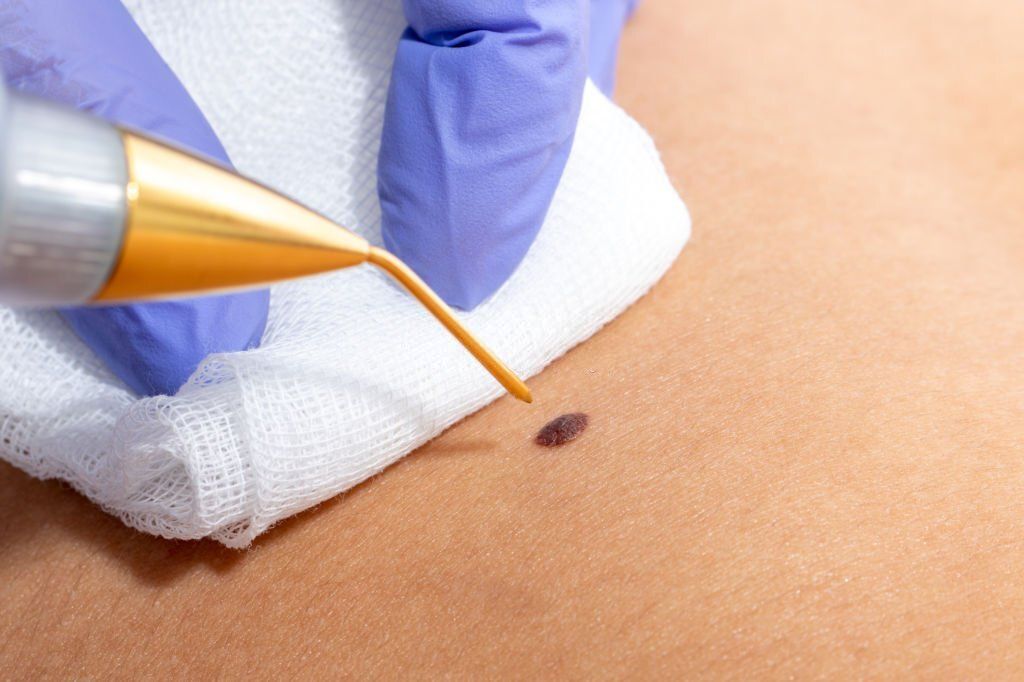This article is reviewed, corrected, and approved by: Dr. Joshua Collins M.D. | MRCP। FRCP
Non-surgical procedures have become incredibly popular in the beauty industry, given the constant changes in the field of cosmetic enhancements. One of these groundbreaking treatments is known as plasma fibroblast. It is a non-invasive method that has gained significant recognition due to its remarkable ability to improve the appearance of the skin.
Let’s explore together plasma fibroblast treatments, understanding how they work, their safety, and most importantly, the jaw-dropping plasma fibroblast before and after results that have left countless individuals beaming with confidence.
What is Plasma Fibroblast Treatment?
Plasma fibroblast treatment, also known as plasma pen therapy or plasma skin tightening, is a cutting-edge, non-surgical procedure designed to rejuvenate and tighten the skin.
It's particularly effective in addressing concerns like sagging skin, removing skin tags, fine lines, wrinkles, and even some forms of scarring. This technique uses a device like a fibroblast plasma pen that emits a controlled and precise electrical arc to stimulate collagen and elastin production in the skin.
How Does it Work?

The magic of plasma fibroblast lies in its ability to create controlled micro-injuries to the skin's surface. By creating tiny heat through a fibroblast plasma pen, the body's natural healing process is stimulated, which leads to the production of collagen and elastin.
These are the essential components for having healthy and firm skin. Over time, the affected areas will become tighter and smoother, which will significantly reduce the appearance of wrinkles and sagging.
The Plasma Fibroblast Procedure
Step-by-Step Explanation of the Treatment Process
The actual plasma fibroblast procedure typically involves the following steps:
- Cleansing the treatment area.
- Use an ointment or topical cream.
- By using the plasma pen device, micro-injuries can be created on the surface of the skin in a controlled manner.
- Targeting specific problem areas.
- Treating the entire area of concern.
- Applying a soothing gel to aid in the healing process.
- Duration and Recovery Time
Plasma fibroblast treatment has the advantage of requiring very little downtime. Most people can get back to work after 3-7 days. During the initial healing stage, which usually lasts 7 to 10 days, it's normal to experience redness, swelling, and small scabs.
Plasma Fibroblast Before and After Treatment
The Pre-Treatment Phase (Before plasma fibroblast)
Consultation with a Professional
To achieve the best outcomes, seeking guidance from a dermatologist is recommended. During this consultation, the expert will assess your skin, discuss your goals, and determine if you're a suitable candidate for the treatment.
Skin Assessment and Suitability
Not everyone is an ideal candidate for plasma fibroblast treatment. Your dermatologist will evaluate your skin's condition and consider factors like skin type, existing health issues, and previous treatments to determine if you're a good fit for the procedure.
Preparing for the Procedure
Preparing your skin for plasma fibroblast treatment is essential for optimal results. This includes adhering to pre-treatment skincare recommendations and managing your expectations. While the procedure is highly effective, it also has side effects.
Post-Treatment Care (After Plasma Fibroblast)
Immediate Aftercare Instructions
Proper aftercare is vital for ensuring the best results from your plasma fibroblast treatment. Your practitioner will provide valuable instruction to follow such as:
- Cleansing and moisturizing the treated area.
- Keeping your skin protected from the sun.
- Avoid picking at blisters or scabs.
- Skincare products should be mild.
- Maintaining a proper skincare regimen in the long term.
Maintaining the benefits of plasma fibroblast treatment requires a commitment to long-term skin care. This may include using sunscreen daily, practicing a good skincare routine, and scheduling periodic touch-up sessions as recommended by your practitioner.
Follow-up appointments and Touch-Ups
Regular follow-up appointments allow your dermatologist and growth to monitor your progress and make any necessary adjustments. In order to achieve your desired results fully, additional touch-up sessions may be recommended in some cases. In some cases, additional touch-up sessions may be recommended to achieve your desired results fully.
Common Concerns and Side Effects Regarding Plasma Fibroblast
After receiving plasma fibroblast treatment, following the post-treatment care instructions is very important. It will help you to minimize any temporary side effects such as swelling, itching, redness, and scabbing. While the procedure is generally safe, there are potential risks to consider, such as infection, scarring, and changes in pigmentation.
However, it's worth noting that severe complications are rare when performed by a skilled practitioner, so you can feel confident in pursuing this treatment option.
Who Should Avoid Plasma Fibroblast?
It is crucial to acknowledge who might not be a good fit for the plasma fibroblast treatment
- Active skin infections or diseases.
- Keloid-prone skin.
- A history of poor scarring.
- Certain medical conditions or medications that affect healing.
- Testimonials and Success Stories
Conclusion
That's everything you need to know about plasma fibroblast before and after. Plasma fibroblast treatment is an incredible non-surgical option that can do wonders for individuals looking to revitalize their skin. The impressive outcomes seen in before and after images clearly demonstrate the significant enhancements that can be achieved without resorting to invasive surgical procedures.
However, consulting a dermatologist is essential to determine if plasma fibroblast treatment is the right choice for you. With the right guidance and expectations, you can unlock the transformative power of non-surgical cosmetic procedures in this journey.
F.A.Qs
Q: What is plasma fibroblast breast lift?
A: The plasma fibroblast breast lift is a procedure that provides a non-surgical way to lift and tighten breasts. Collagen and elastin production is stimulated by plasma heat, resulting in firmer breasts.
Q: How much does the plasma fibroblast cost?
A: The cost of a single session of plasma fibroblast treatment can range from $200 to $2,000.
Q: What are the differences between jet plasma vs fibroblast?
A: Jet plasma and fibroblast are minimally invasive procedures using heat to stimulate collagen and elastin production. Jet plasma is newer and less invasive, while fibroblast is more traditional but can cause more downtime and side effects. Both create tiny, controlled burns to stimulate the skin.
Q: What are the before and after results of plasma fibroblast stretch marks?
A: Generally, stretch marks can be reduced by this procedure. Plasma fibroblast treatment for stretch marks varies in effectiveness.
What is Plasma Fibroblast Treatment?
- Non-invasive, skin-tightening procedure.
- Stimulates collagen and elastin production.
How it Works:
- Creates controlled micro-injuries with a plasma pen.
- Promotes natural healing, leading to tighter, smoother skin.
Pre-Treatment Phase:
- Consultation with a dermatologist.
- Skin assessment for suitability.
- Preparing skin for optimal results.
Post-Treatment Care:
- Cleansing and moisturizing treated area.
- Sun protection for skin.
- Avoiding picking at blisters or scabs.
- Maintaining long-term skincare regimen.
Who Should Avoid Plasma Fibroblast:
- Active skin infections or diseases.
- Keloid-prone skin.
- History of poor scarring.
- Certain medical conditions or medications affecting healing.


